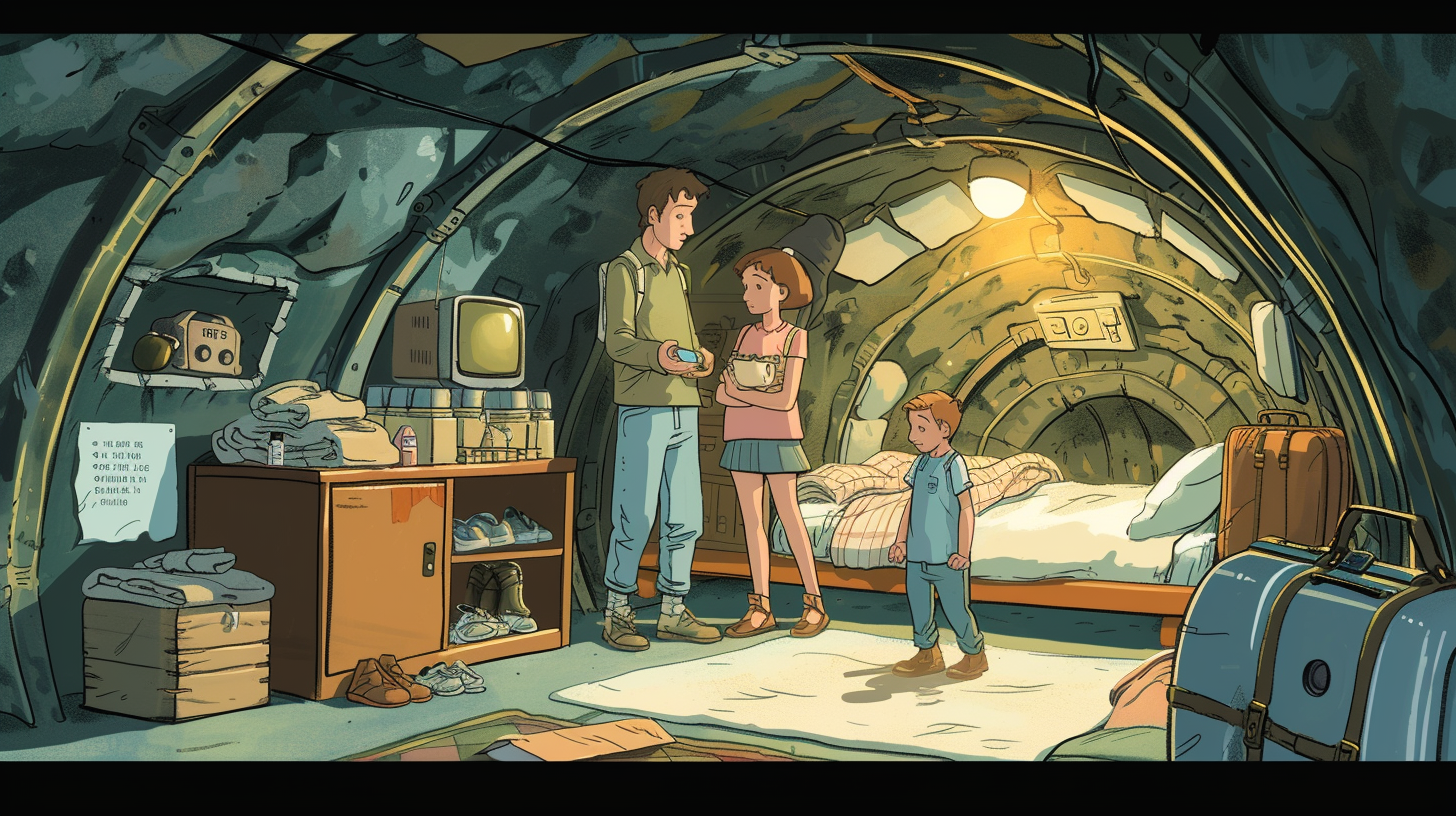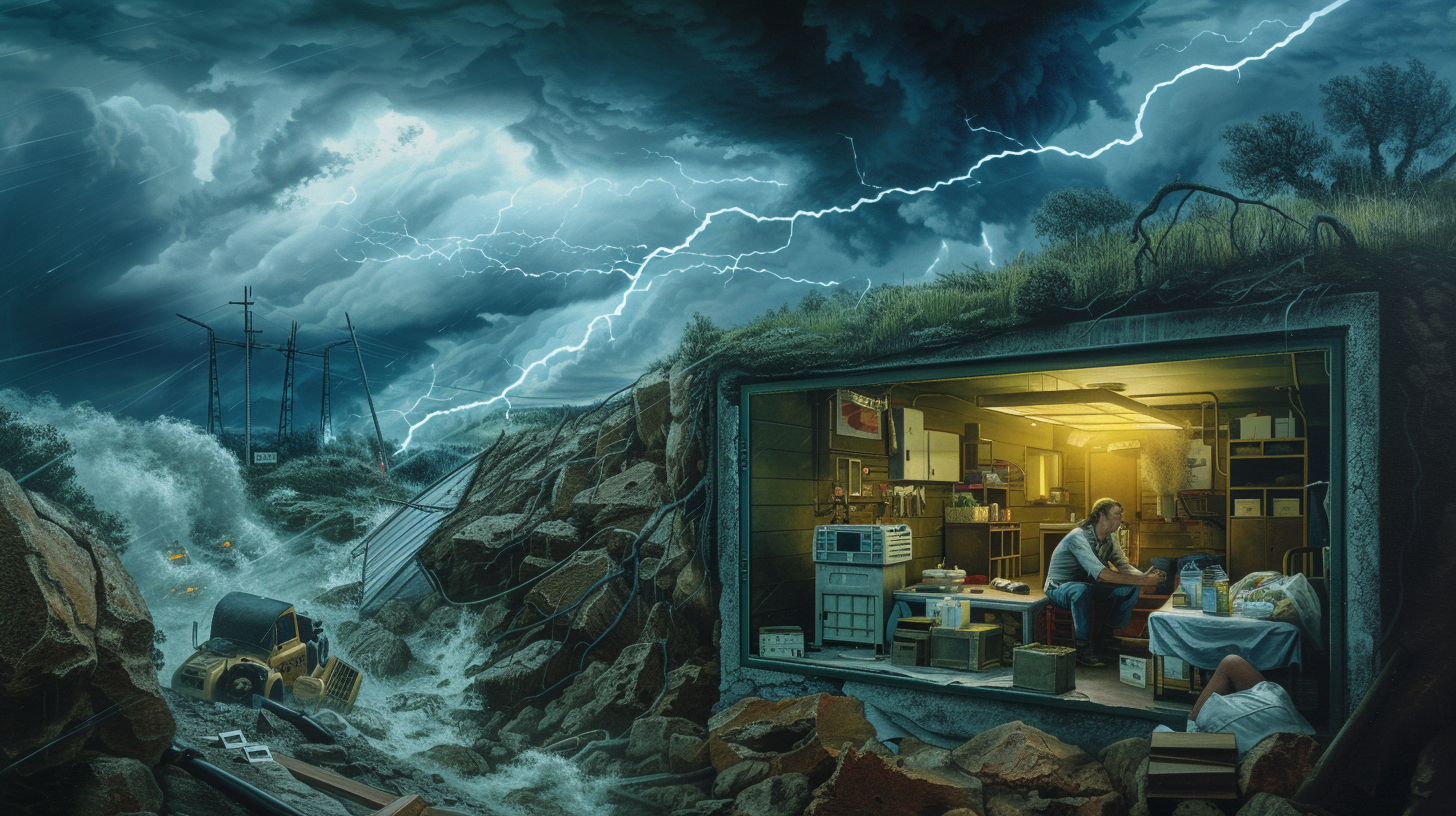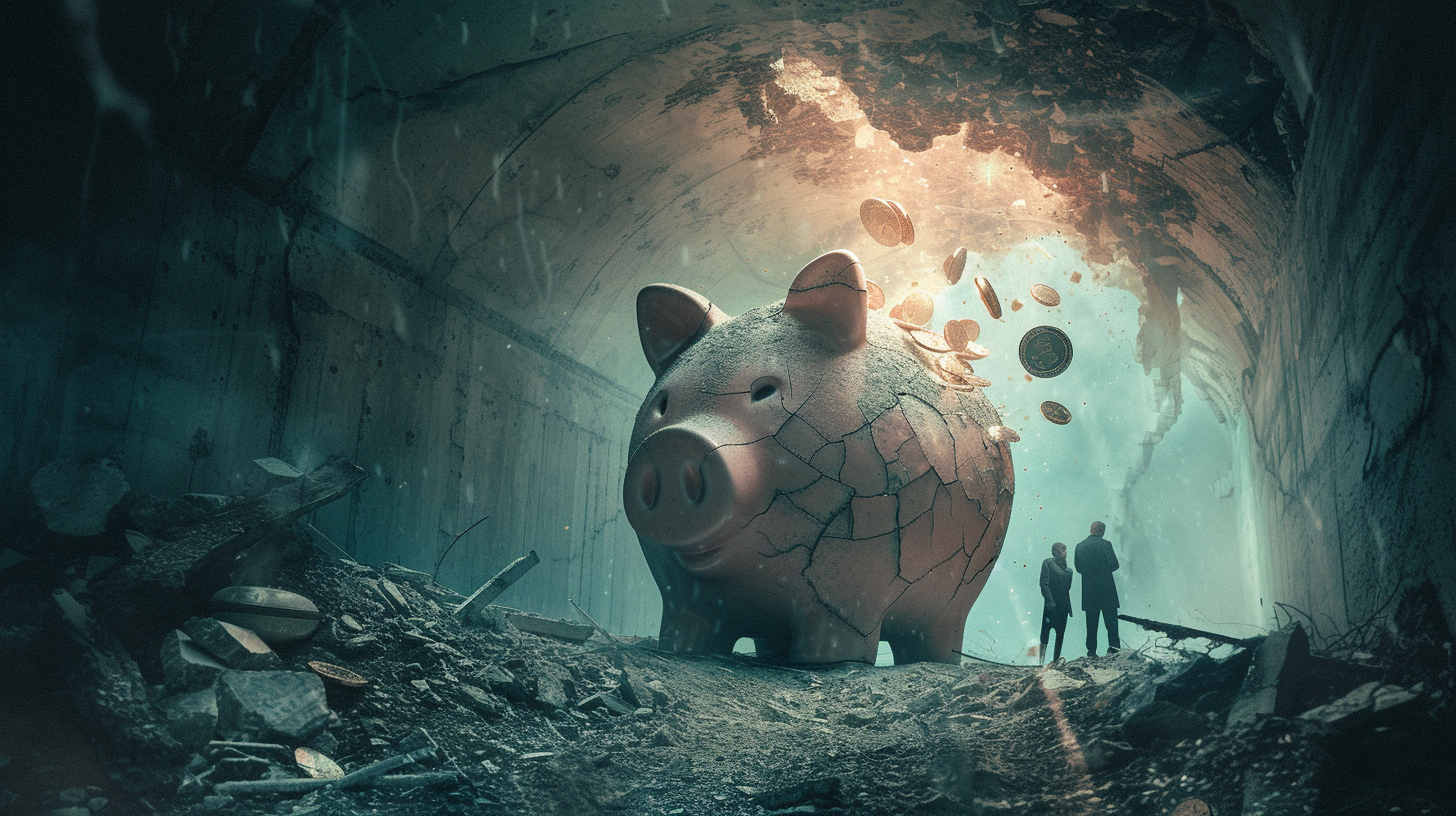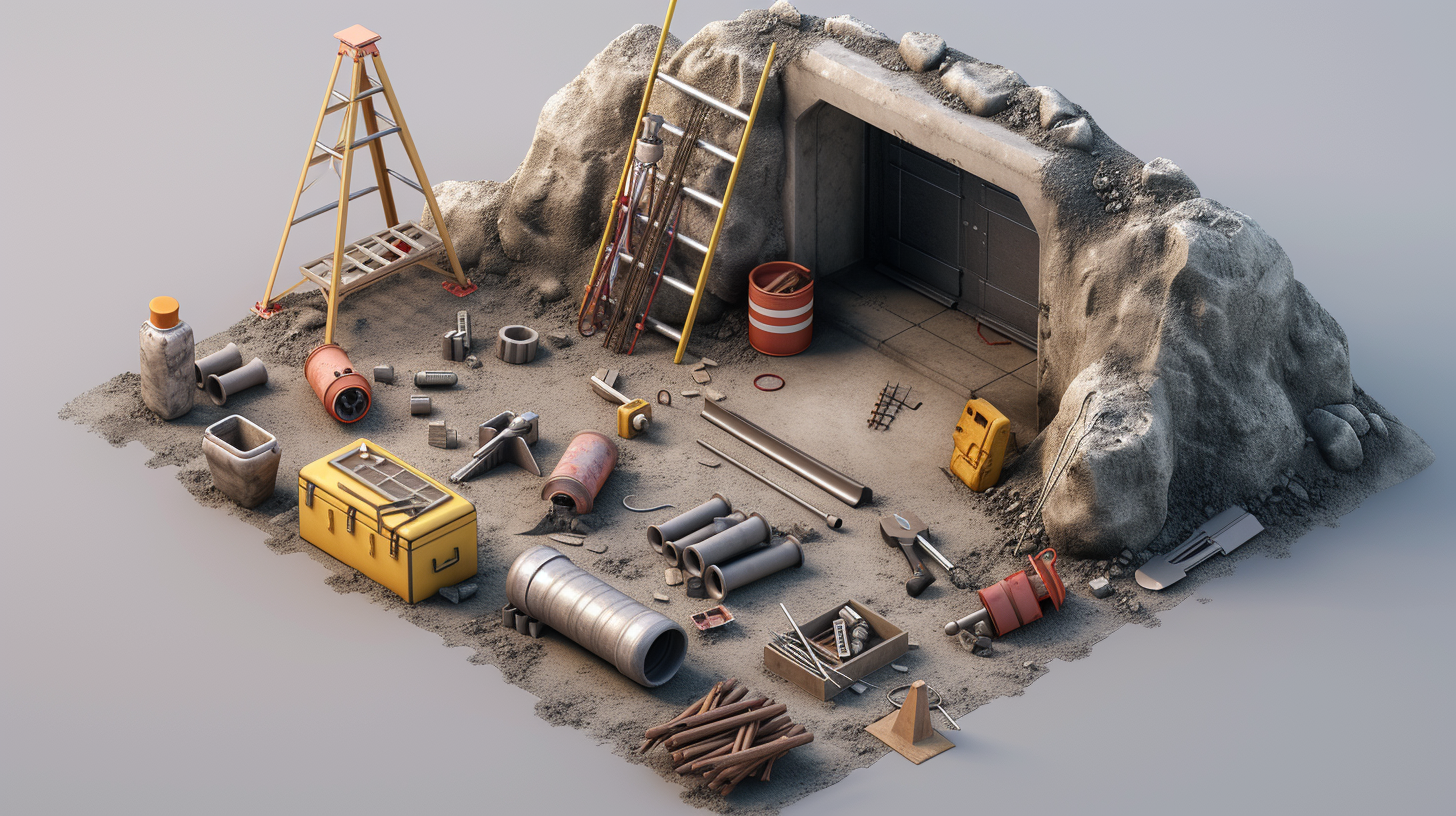When you consider investing in a pre-built bunker, you’re weighing immediate safety against long-term sustainability, the peace of mind against the potential for isolation. As you navigate through the decision-making process, it’s crucial to understand that while the allure of having a secure retreat can be comforting, the reality of owning one comes with its unique set of challenges.
From the high upfront costs and ongoing maintenance to the psychological impact of extended stays underground, each factor plays a critical role in determining whether this investment aligns with your survival strategy. Moreover, the limitations on customization and the potential risks, including flooding and compromised security, cannot be overlooked.
So, as you ponder the balance between security and practicality, it’s worth exploring both the tangible and intangible aspects further to make an informed decision that best suits your needs and circumstances.
Key Takeaways
- Immediate safety benefits: Pre-built bunkers offer immediate protection from natural disasters and nuclear fallout, with solid walls providing resistance against storms and flying debris. They also reduce the risk of fire and provide convenient and easily accessible locations for quick access to safety.
- High investment costs: Pre-built bunkers can be costly, potentially reaching hundreds of thousands of dollars. The investment covers not only the physical structure but also specialized equipment and technology. The high costs may not be feasible for everyone and require careful consideration of financial situation and long-term security needs.
- Customization limitations: Investing in a pre-built bunker reduces design flexibility and may require extensive renovations to alter the layout or add specific features. Modifying the structure to fit specific needs and preferences can be challenging, hindering the addition of advanced technologies or personalized safety measures.
- Personal preferences challenge: Pre-built bunkers may not fully adapt to unique preferences and requirements, making it difficult to customize the layout or add personalized amenities. This lack of customization can lead to dissatisfaction and challenges in accommodating the needs of family or group members.
Immediate Safety Benefits
Investing in a pre-built bunker offers immediate safety benefits, protecting you from natural disasters, nuclear fallout, and more with its sturdy construction and flame-resistant materials.
When you think about securing a safe place for you and your loved ones, the idea of an underground bunker likely comes to mind. It’s not just a fallback; it’s a proactive measure against a variety of external threats.
The benefits are clear from the start. In the face of storms, winds, and flying debris, the solid walls of an underground bunker stand firm, greatly increasing your chances of survival. Fire, often a devastating byproduct of natural disasters and other emergencies, poses less of a threat thanks to the bunker’s flame-resistant materials. Moreover, its convenient and easily accessible location ensures that when time is of the essence, you’re not scrambling to find a safe place.
Beyond the physical protection, the peace of mind that comes with knowing you have a secure shelter against external threats is invaluable. Whether it’s the wrath of nature or human-made dangers, your bunker is a testament to your foresight and commitment to safety.
High Investment Costs
While offering unparalleled safety, pre-built bunkers come with hefty initial construction costs, often exceeding $50,000 and potentially reaching into the hundreds of thousands. Investing in a pre-built bunker, therefore, means you’re facing high investment costs right from the start. These costs don’t just cover the physical structure but also the specialized equipment and technology needed to make the bunker fully functional and livable for extended periods.
You’ve got to weigh these costs against the peace of mind and security a bunker offers. While it’s a significant financial outlay, the investment secures a safe haven against a range of threats, from natural disasters to other emergency scenarios. However, the high investment costs mightn’t be feasible for everyone, making it crucial to carefully consider your financial situation and long-term security needs before proceeding.
Moreover, the high costs associated with pre-built bunkers could limit your ability to invest in other areas, whether that’s other forms of emergency preparedness or different investments entirely. So, while a bunker promises safety, it’s essential to balance this against the financial implications and ensure it aligns with your overall investment strategy and goals.
Customization Limitations
When you invest in a pre-built bunker, you’ll quickly find that design flexibility is significantly reduced. Trying to match the bunker to your personal preferences becomes a substantial challenge, as altering the layout and adding specific features can demand extensive renovations.
This limitation may force you to compromise on your ideal vision for a secure and comfortable underground haven.
Design Flexibility Reduced
Choosing a pre-built bunker often means sacrificing design flexibility, limiting how well it can be customized to meet your specific needs and preferences. When you opt for one of these underground bunkers, you’re facing several customization limitations:
- You might struggle to modify the structure to fit specific features or layouts, reducing the bunker’s overall comfort and functionality.
- Incorporating specialized equipment, storage, or unique security features becomes more challenging, possibly not aligning with your requirements.
- The design flexibility reduced in these shelters can hinder the addition of advanced technologies or personalized safety measures.
- Ultimately, a bunker can provide shelter without fully optimizing for efficiency, convenience, or your personal touch, impacting satisfaction.
These constraints highlight the trade-offs between the convenience of pre-built options and the desire for a fully tailored shelter.
Personal Preferences Challenge
Investors often find that pre-built bunkers can’t fully adapt to their unique preferences and requirements. This personal preferences challenge is significant.
You might dream of a bunker with large areas bathed in natural light, or specific air filtration systems, but the pre-built models offer limited flexibility. Customizing the layout or adding personalized amenities becomes a struggle. You’re stuck with what’s inside the bunker, making it difficult to accommodate the unique needs of your family or group.
This lack of customization can lead to dissatisfaction, as you’re unable to tailor the space exactly to your liking. The pre-built route might seem convenient at first, but it often falls short when it comes to meeting specific, individual requirements.
Maintenance and Upkeep
To ensure your pre-built bunker remains a safe haven, regular maintenance and meticulous upkeep are crucial. Your underground shelter isn’t just a place to hide away; it’s a complex structure that demands attention to detail to keep everything running smoothly and ensure you’re truly sealed inside from the outside world’s threats. Here’s what you need to keep in mind:
- Inspect and repair ventilation systems and air filtration: These are your lifelines, making sure the air you breathe is clean and circulating properly. Without them, your bunker could become an unsafe place very quickly.
- Check and maintain plumbing systems: Water is another critical resource. Ensuring your plumbing is in top shape avoids the risk of leaks or water shortage.
- Restock supplies regularly: From food to medical supplies, having a well-stocked bunker means you’re prepared for extended stays without external contact.
- Service power generators and security features: Reliable power and robust security measures like blast doors and surveillance systems are non-negotiable for off-grid living and peace of mind.
Maintenance and upkeep of bunkers are fundamental to sustaining a safe, livable underground shelter. Neglecting these aspects could compromise your safety and the efficiency of being sealed inside away from the world’s perils.
Security and Privacy Concerns
While considering a pre-built bunker for security, it’s crucial to weigh the potential risks of break-ins and the ethical dilemmas of dealing with outsiders in need. Security and privacy concerns are at the forefront when investing in an underground sanctuary. The risk of theft, violence, and unauthorized intrusions can escalate if your bunker’s location becomes known. Despite these challenges, bunkers can be made into a secure location with the right measures.
The dilemma of whether to aid those outside your bunker during emergencies can also pose ethical challenges. Balancing compassion with the safety of those inside is a delicate matter. Moreover, keeping your bunker’s existence a secret poses operational security challenges. Without adequate precautions, the risk of others discovering your hideout increases, making it a target for theft or worse.
Ensuring your bunker remains a secure and private haven requires vigilant measures against unauthorized access and safeguarding your supplies from theft or damage. Investing in robust security systems and maintaining discretion about your bunker’s existence are essential steps to mitigate these concerns. Remember, the safety and privacy of your underground refuge ultimately depend on the precautions you take to secure it.
Alternative Safety Measures
Beyond addressing security and privacy concerns, it’s also essential to consider alternative safety measures for enhancing your bunker’s resilience. When considering investing in a pre-built bunker, the primary allure may be its ability to protect against natural disasters, nuclear attacks, and ensure your family’s safety without having to go outside. However, to truly maximize your bunker’s efficacy, incorporating a range of alternative safety measures can make a significant difference.
Here are some vital alternative safety measures to consider:
- Enhanced Communication Systems: Ensuring you have reliable ways to communicate with the outside world, especially in scenarios where you might be cut off due to a disaster.
- Air Filtration Systems: Critical for protection against chemical, biological, and nuclear threats, ensuring you can breathe safely even when the air outside is contaminated.
- Water Purification Systems: Given the importance of clean drinking water, having systems in place to purify water is essential, especially during extended stays.
- Sustainable Food Sources: Incorporating hydroponic or aquaponic systems within your bunker can provide a renewable source of food, reducing the need to go outside and ensuring self-sufficiency during prolonged periods of isolation.
Conclusion
In conclusion, investing in a pre-built bunker can significantly boost your survival chances by offering immediate safety against numerous threats. However, you’ll face high initial costs, customization restrictions, and ongoing maintenance challenges.
Security and privacy come with their own set of concerns, prompting you to weigh these factors carefully. Considering alternative safety measures like forming networks and enhancing survival skills could offer more flexibility and lower costs.
Ultimately, it’s about finding the balance that works best for you.




